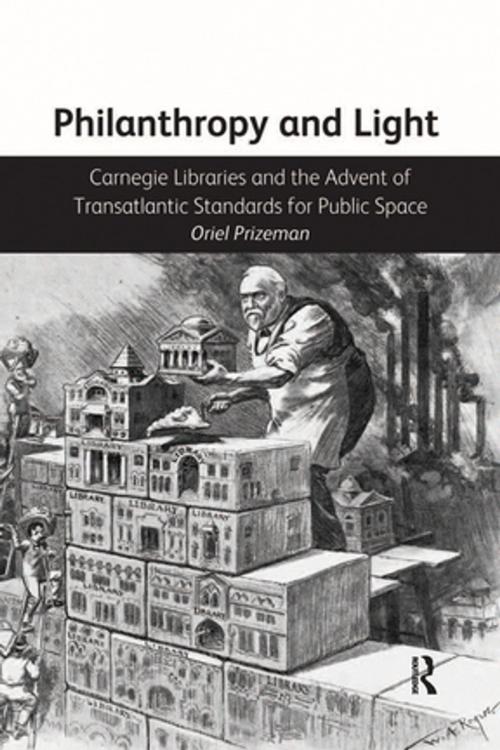Philanthropy and Light
Carnegie Libraries and the Advent of Transatlantic Standards for Public Space
Nonfiction, Art & Architecture, Architecture| Author: | Oriel Prizeman | ISBN: | 9781317081272 |
| Publisher: | Taylor and Francis | Publication: | April 22, 2016 |
| Imprint: | Routledge | Language: | English |
| Author: | Oriel Prizeman |
| ISBN: | 9781317081272 |
| Publisher: | Taylor and Francis |
| Publication: | April 22, 2016 |
| Imprint: | Routledge |
| Language: | English |
Walter Gropius associated standardisation with promoting civilisation in 1935, yet Andrew Carnegie’s influence on the proliferation of pattern book public library plans internationally predated these observations by 50 years. Through the first twenty years of his programme, he supported the erection of almost three thousand public buildings across Britain and America. Though better acknowledged in the US than the UK, this philanthropic contribution radically extended the scope of public provision and remains incomparable in its scale and scope in both nations. Frequently engraved with the self-deifying slogan Let there be Light, open access to navigate these new interior public spaces after work coincided with the first provision of electric light. Towards the end of the nineteenth century, professional groups had sought to specify minimum standards of natural light and air for schools and hospitals. However, the commercial quantification of electricity accelerated the development of a readily comparable vocabulary to prescribe adequate quantities of light for all tasks regardless of their location or orientation. Seeking to gauge the extent of universal values, this book concentrates on the design and performance of a handful of early Carnegie library buildings in Britain and America, identifying their response to contemporary design theory, but also by contrast to their respective local environmental contexts. It examines whether their standards of provision were equitable and if these privately financed public buildings were the first roots of generically standardised public environments to be shared transatlantically. The book also argues that the public library building type can provide a datum for acknowledging the twentieth century legacy of shared international environmental standards for public spaces more broadly.
Walter Gropius associated standardisation with promoting civilisation in 1935, yet Andrew Carnegie’s influence on the proliferation of pattern book public library plans internationally predated these observations by 50 years. Through the first twenty years of his programme, he supported the erection of almost three thousand public buildings across Britain and America. Though better acknowledged in the US than the UK, this philanthropic contribution radically extended the scope of public provision and remains incomparable in its scale and scope in both nations. Frequently engraved with the self-deifying slogan Let there be Light, open access to navigate these new interior public spaces after work coincided with the first provision of electric light. Towards the end of the nineteenth century, professional groups had sought to specify minimum standards of natural light and air for schools and hospitals. However, the commercial quantification of electricity accelerated the development of a readily comparable vocabulary to prescribe adequate quantities of light for all tasks regardless of their location or orientation. Seeking to gauge the extent of universal values, this book concentrates on the design and performance of a handful of early Carnegie library buildings in Britain and America, identifying their response to contemporary design theory, but also by contrast to their respective local environmental contexts. It examines whether their standards of provision were equitable and if these privately financed public buildings were the first roots of generically standardised public environments to be shared transatlantically. The book also argues that the public library building type can provide a datum for acknowledging the twentieth century legacy of shared international environmental standards for public spaces more broadly.















